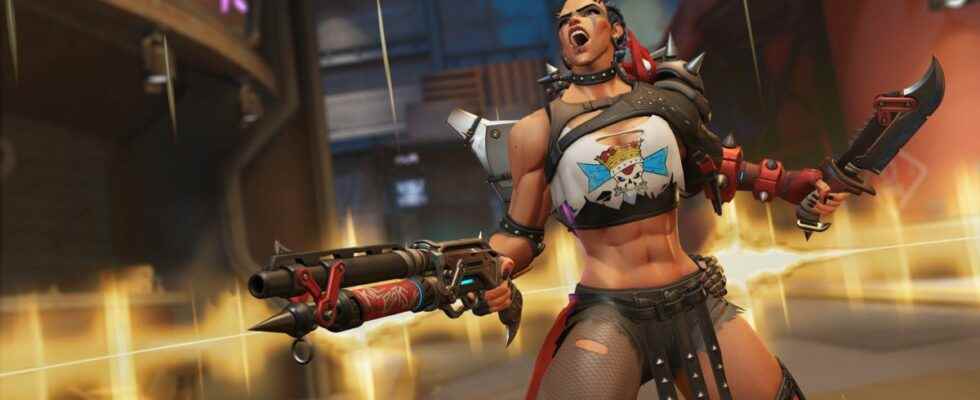Overwatch 2, sequel or update? © Blizzard
Announced in 2014 for release in 2016, the hero shooter [jeu de tir par incarnation de personnage unique, NDLR] from Blizzard has been present in the gaming landscape for a long time. Having brought together a community of players, the game has managed to be essential, even developing a competitive scene. But time passes and, in doing so, competition and weariness arise. Blizzard had to restore the image of its FPS and chose, rather than an overhaul, to release a second opus. A real promise from the studio.
Relatively unchanged gameplay. © Blizzard
Overwatch 2 was therefore released at the beginning of October, and with it already its first batch of disappointments. In addition to the single player mode, presented as the indisputable added value of the game, which sees its final release shifted to a date still unknown, it is the classic server problems that have “welcomed” the players. Fortunately, the old-timers were able to find their favorite characters and cards so as not to be too confused by the additions of new characters, which are an impressive three in number: Junker Queen, Sojourn and Kiriko. Each of them being respectively part of the character classes Tank, DPS and Support in order to make no one jealous.
Change, but not too much
Ironic enough: players were certainly upset by the major change in this opus, namely the reduction in the number of players per team. From now on, the teams are made up of five players, and no longer six, which is supposed to allow both to avoid the multiplication of character classes (especially Tanks), but also to energize the games to push for more movements and adaptation. Increased dynamism also in the new game mode – called “Pressure” -, with maps more focused on verticality, the teams then having to accompany a robot in the part of the opponent’s map while remaining at its side. And while it’s still possible to play for glory in ranked play, Blizzard also offers a daily rotation of game modes that are less hassle-free and different from classic Overwatch, including a death match or a “Bounty Hunter” mode. A way for the studio not to plunge new players directly into the deep end of competitive games – with the toxicity that accompanies it.
New game modes and new cards to call. © Blizzard
Indeed, if Overwatch 2 does not show a drastic change in content, it presents one, on the other hand, in its economic model. Blizzard’s FPS had to kowtow to the terrible consensus imposed by Fortnite and its battle pass. If the purchase of Overwatch first of the name implied that of all the characters, his little brother is more mischievous. Admittedly, the game is much more accessible because it is free, however it is less complete since it is up to the player to unlock the different characters, through countless hours of play or… credit card payments. And there is the downside, since the essence of Overwatch lies in the adaptability it imposes, each character being in reality a new strategy capable of changing the course of a game. If it’s far from a game pay-to-win (“pay to win”), Overwatch 2 imposes on its players a certain relentlessness to unlock all the weapons available in order to play as it should, unless they decide to avoid blood and tears by spending their pay — or their pocket money.
One gamepass to own them all. © Blizzard

